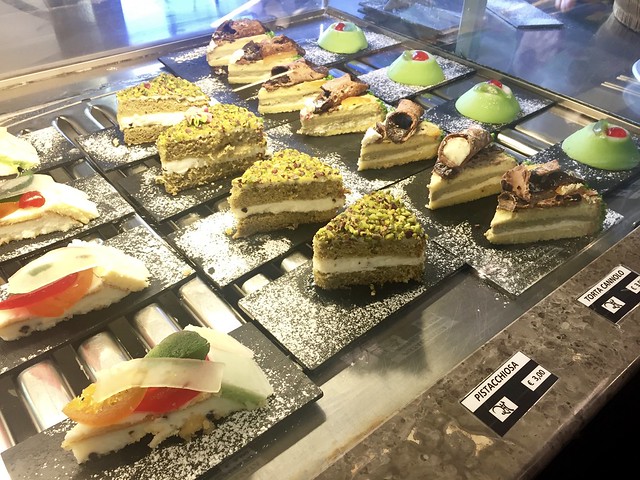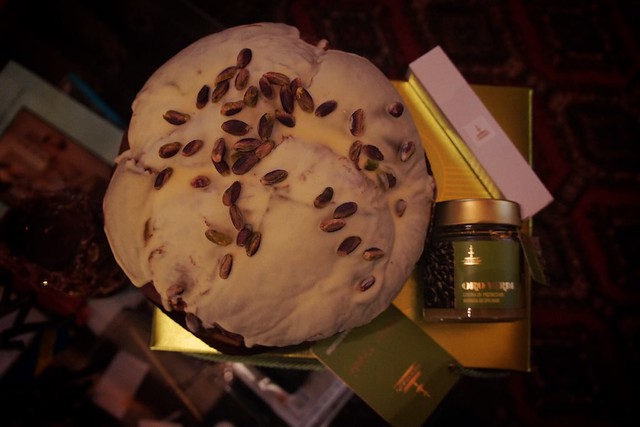There’s nothing like a touch of Italy on the holiday table, from great hard-to-find wines to local specialties like truffle sauce or extra virgin olive oil carefully tucked away and carried back in luggage from your latest trip. If you’ve exhausted your vacation cupboard by the time Christmas rolls around, preparing a traditional dish can add a bit of old world glamour to your table.

(Photo by Concierge in Umbria via Flickr)
Though a towering plate of pasta may be too much of a departure from tradition for your holiday feast, even the most old school guests will appreciate an Italian dessert. Like all Italian food, Italy’s desserts are relatively simple and must be made with the best fresh ingredients. Here are a few crowd-pleasers sure to bring just the right touch of the Bel Paese to your holiday celebration this year:
Tiramisù
By far, the most famous Italian dessert both in Italy and across the globe is tiramisù. Though there are dozens of contemporary riffs on tiramisù, the classic and most beloved version uses only five ingredients: mascarpone, eggs, sugar, ladyfingers, and espresso. (Okay, six if you count a dusting of cocoa or chocolate shavings on the top). Since there are so few ingredients, it is absolutely vital to use the very best for the success of this dish. Eggs should be free range farm eggs, mascarpone should be artisanal, and ladyfingers should be the crisp “savoiardi” type, not soft spongecake. An exceptional tiramisù will make everyone at the table sit up and take notice.
Tozzetti e Vin Santo
If you’re hankering for a taste of Italy but don’t have the time or inclination to prepare a dish from scratch, there is nothing more authentic than tozzetti (also known as cantucci) and Vin Santo. This is the most common way to end a meal in much of Tuscany and Umbria, and is a simple course of crisp, twice-baked tozzetti or cantucci – sold in the US as the generic “biscotti”, which means cookie in Italian – dunked in sweet Vin Santo wine. Tozzetti trace their origins to the Tuscan town of Prato in the Renaissance and were originally flavored with almonds that grow in the area’s groves, though today can be found in anisette, lemon, amaretto, dried fruit, or chocolate versions. Vin Santo, or saint’s wine, dates back even further to the Middle Ages. This sweet but complex, amber-colored wine is made of Trebbiano and Malvasia grapes which are harvested in the late fall and then dried on straw mats for months, traditionally until the Holy Week of Easter. The wine then ages for three to twelve years in small barrels, and can be costly because of this labor-intensive production. Both cantucci and Vin Santo can be found in specialty gourmet shops in the US, or brought back from Italy as souvenirs.
Crostata
Crostata is to Italy what apple pie is to the US: the most iconic of old fashioned, homey desserts. The best crostate, or tarts, are made with a shortbread crust and paired with fruit preserves that have been made by hand using ripe, seasonal fruit. The worst are school potluck versions with tough or dry bread’like crusts and a thick layer of tooth-achingly sweet commercial jam or, worse, Nutella. If you have some excellent homemade or farmer’s market jam to showcase and are a deft hand at buttery shortbread pastry, a crostata is a very retro yet delicious tart that can be served anytime from breakfast to after dinner. For summer fruit preserves, grate some lemon zest into the pastry dough; for winter fruit jams, add a bit of cinnamon or nutmeg. Use the extra dough to decorate the top of the crostata with a loose lattice or cookie cutter shapes like autumn leaves for Thanksgiving or snowflakes for the winter holidays.
Cassata

(Photo by Concierge in Umbria via Flickr)
Many of the desserts we recognize in the US as Italian are actually Sicilian, including cassata and cannoli. Both are based on the freshest ricotta sweetened with sugar and quality candied fruit, but cannoli use this creamy concoction to fill rolled pastry shells whereas cassata layers it between sheets of liqueur-soaked spongecake and tops the entire cake with a shell of green and white marzipan. Cassata most likely has Arabic origins, dating back to when the island was under Muslim rule in the 10th century. Like tiramisù, cassata is a dessert that can only be made with the best ingredients, including fresh ricotta, handmade candied fruit, and quality marzipan. This is an excellent project if you have artistic flair, as a cassata is almost always ornately decorated with more candied fruit, piped icing, and marzipan.
Panettone or Pandoro
These traditional Christmas sweet breads are very rarely made at home in Italy, as they are both labor-intensive and easy to find in bakeries and pastry shops from November through January. That doesn’t mean that you can’t attempt a homemade version, however, as neither is particularly challenging for an experienced baker.

(Photo by Concierge in Umbria via Flickr)
Panettone is the slightly less sweet, more bread-like of the two and is usually flavored with chocolate morsels, raisins, candied fruit, or dried figs and walnuts. Pandoro is more like a delicate cake, rising in a star shape and topped with a dusting of powdered sugar. To decide which you would like to tackle, you should probably choose if you are on Team Panettone or Team Pandoro first!


